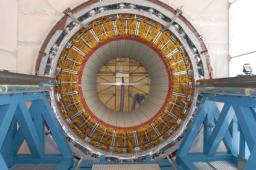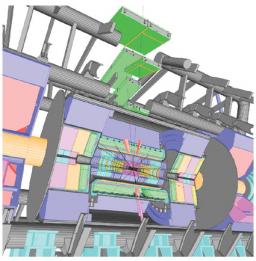
Atlas electromagnetic calorimeter. : the first half of the barrel calorimeter in its cryostat and the 55000 signal cables connected to their feed-throughs distributed around the
cryostat.

Atlas : Simulated event represented graphically using the PERSINT visualisation code.
This programme allows removing or adding detector parts to improve the view, changing its orientation, etc…
